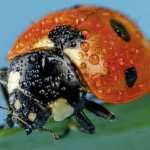Camera traps record Serengeti wildlife
A large-scale camera tracking survey has provided a fascinating insight into the daily lives of the animals found in the Serengeti National Park in Tanzania.
Using 225 automated cameras across a 700 square mile study area, researchers captured 1.2 million sets of pictures between 2010 and 2013, more than 320,000 of which contained animals. Triggered by an infrared and motion sensor, the cameras – attached to trees and steel poles –recorded the natural behaviour of 40 diff erent mammalian species, including rarities such as aardwolf, zorilla and honey badger.
More than 28,000 volunteers helped to classify all the images via the citizen science website snapshotserengeti.org. The most commonly seen animals were those undertaking migrations across the plains; more than 100,000 wildebeest were identified, and the cameras were triggered by passing zebra on more than 70,000 occasions.
The team behind the project says the data and imagery off er an unparalleled opportunity to explore the interactions between species , as well as having uses in computer research.
 Dr Ali Swanson, who was affiliated with the University of Minnesota, US, for the research, told OP: ‘We initially set up the cameras to study how different species interact – how many large carnivores share the landscape with each other, and how many diff erent prey species balance their need to eat with avoiding being eaten. We’re still actively working on many of these ecological analyses, but we’ve also now published the entire set of photographs and volunteer classifications in the hope that many diff erent research groups can use the dataset for an array of diff erent questions. Not just in ecology, but in computer vision, citizen science, and even education. For example, researchers developing machine learning algorithms to teach computers how to recognise images need really large ‘training’ datasets where the images have already been classified.
Dr Ali Swanson, who was affiliated with the University of Minnesota, US, for the research, told OP: ‘We initially set up the cameras to study how different species interact – how many large carnivores share the landscape with each other, and how many diff erent prey species balance their need to eat with avoiding being eaten. We’re still actively working on many of these ecological analyses, but we’ve also now published the entire set of photographs and volunteer classifications in the hope that many diff erent research groups can use the dataset for an array of diff erent questions. Not just in ecology, but in computer vision, citizen science, and even education. For example, researchers developing machine learning algorithms to teach computers how to recognise images need really large ‘training’ datasets where the images have already been classified.
Learn more about the project at snapshotserengeti.org



























